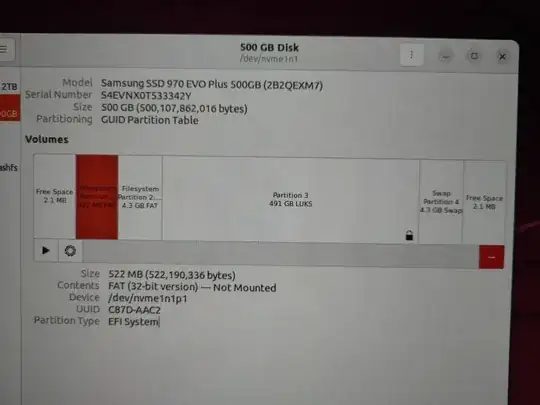I need to replace PopOs on my machine with Ubuntu and trying to figure out how to partition the disk. I have 2 physical disk: 0.5T with boot PopOS and 2T with the Windows. There are EFI partition on the 0.5T disk, FAT 4.3 Gb partition and 491 Gb PopOS + Swap partitions. I assume 4.3 Gb FAT is related to windows, but i'm not sure.
When booted with Ubuntu usb, it doesn't detect existing system, so I don't wont to wipe the whole disk. Please suggest what partitions is safe to delete, should I manually updated boot loader on EFI partition for Ubuntu and what would be a proper way to partition

lsblk -fPost in question above. If you have some idea of size of data may be better to split / (root) & /home, but not required if newer user. Ubuntu now uses a lot of snaps that take more room in /. I like Kubunutu and do not install any snaps. My / is about 16GB in 30GB partition. But some have posted snaps taking 20GB just for the snaps, so minimum / may be 40 or 50GB. You need to know which ESP each system uses. – oldfred Nov 26 '23 at 15:22